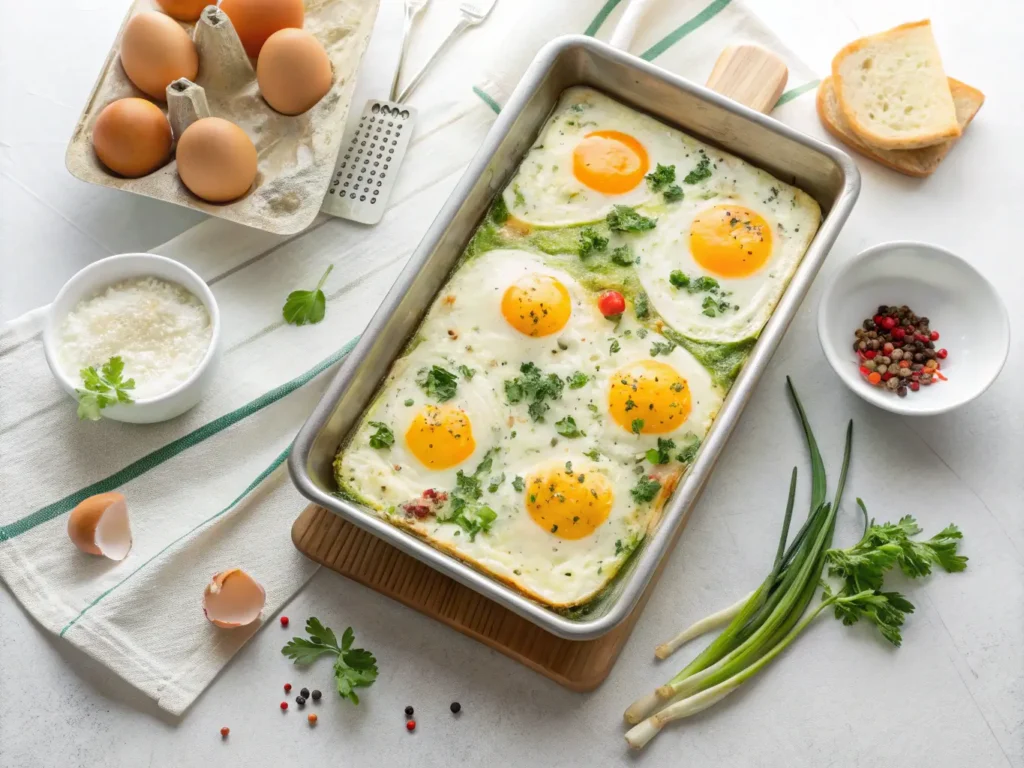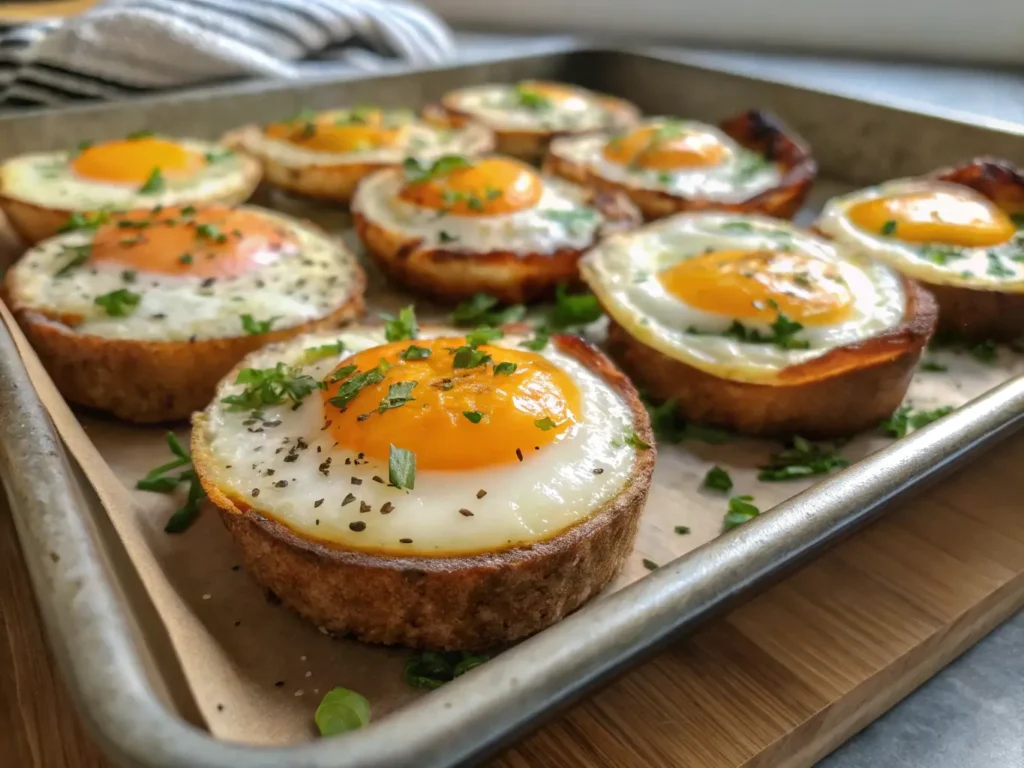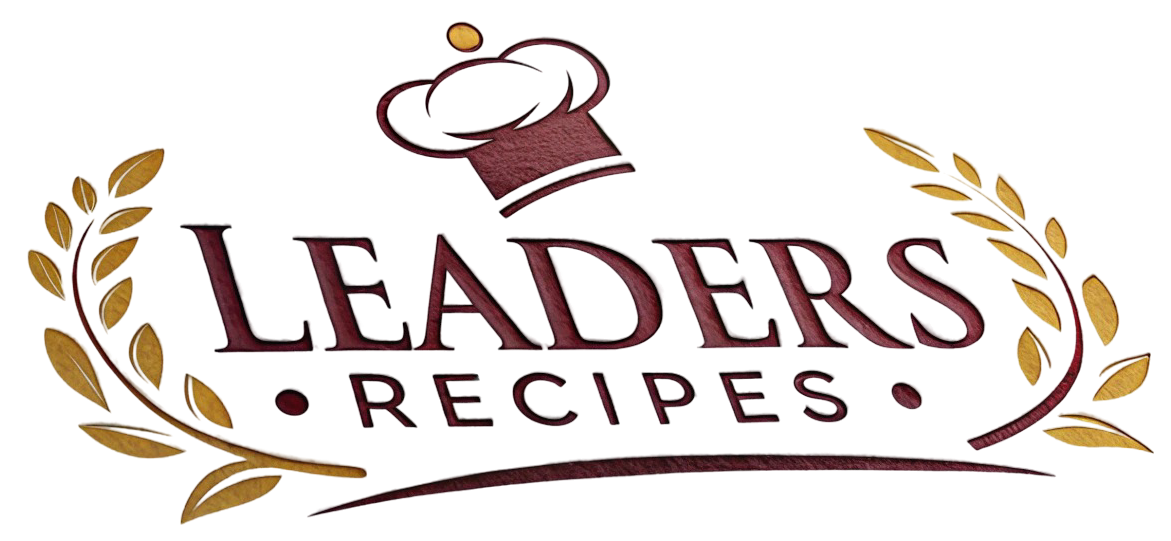Table of Contents
Sheet Pan Eggs are a game-changer when it comes to preparing a quick, convenient, and versatile breakfast or meal. Whether you’re feeding a crowd at brunch, preparing breakfast for the week ahead, or looking for an easy solution to make breakfast on-the-go, sheet pan eggs offer the perfect solution. This method of baking eggs on a sheet pan allows for even cooking, easy portioning, and the ability to customize with various fillings, from vegetables to meats and cheeses.
One of the most appealing aspects of sheet pan eggs is their meal prep-friendly nature. You can bake a large batch at once, slice them into perfect squares, and enjoy them throughout the week. Whether you prefer to eat them fresh or pack them for lunch, sheet pan eggs can be prepared in advance and stored for later use. They’re ideal for busy mornings or as a crowd-pleasing option for holiday gatherings and family breakfasts. Let’s dive into everything you need to know to create perfect sheet pan eggs that are both delicious and nutritious.
What Are Sheet Pan Eggs?
Definition and Key Characteristics
Sheet Pan Eggs are eggs that are baked in a single layer on a large baking sheet, resulting in evenly cooked, sliceable portions. This method allows you to cook multiple servings of eggs at once, making it ideal for family breakfasts, meal prep, and large gatherings. Unlike traditional scrambled or fried eggs, sheet pan eggs bake in the oven, providing a hands-off cooking experience that requires minimal attention.
The process involves whisking eggs with seasonings, pouring the mixture into a prepared sheet pan, and baking it until set. Depending on your preferences, you can add a variety of vegetables, meats, and cheeses to customize the dish to your liking. The result is a fluffy, perfectly cooked egg dish that can be sliced into squares, rectangles, or even fun shapes for an appealing presentation.
Why They’re So Popular
Sheet pan egg have gained popularity for several reasons. The primary advantage is convenience. Unlike stovetop eggs, which require constant attention, sheet pan egg allow you to pop them in the oven and focus on other tasks while they cook. Additionally, this method is highly versatile. Whether you want a simple, plain egg base or a more complex combination of fillings, sheet pan egg can be easily customized.
Moreover, the ability to batch cook makes sheet pan egg a go-to solution for meal prep. You can bake a large tray of eggs and store them for the week, ensuring a quick breakfast or lunch option that’s ready to go. This method is perfect for those with busy schedules who want a nutritious, high-protein breakfast without spending time in the kitchen every morning.
Sheet Pan Eggs vs. Traditional Eggs
Sheet pan egg differ significantly from traditional stovetop methods like scrambled or fried eggs. Scrambled eggs cook in a pan on the stovetop and require constant stirring, while sheet pan egg bake in the oven, allowing for a more hands-off preparation.
Sheet pan egg cook more evenly because the heat spreads uniformly across the pan. Scrambled eggs, however, often cook unevenly, with some parts overcooked and others undercooked. Additionally, sheet pan egg make portioning easy; you can cut them into even slices, which is harder to do with scrambled eggs.
Health Benefits and Customization of Sheet Pan Eggs
High-Protein Breakfast Option
One of the major benefits of sheet pan egg is that they are a high-protein breakfast option. Eggs are packed with high-quality protein, which is essential for muscle growth, repair, and satiety. A protein-rich breakfast helps keep you fuller for longer, preventing overeating later in the day. This makes sheet pan egg a great choice for those looking to fuel their mornings with a nourishing meal.
In addition to protein, eggs are a source of essential nutrients like vitamin D, choline, and omega-3 fatty acids. These nutrients play a role in everything from brain function to heart health, making eggs a nutrient-dense food that supports overall wellness.
Low-Calorie and Nutrient-Rich
Despite their rich texture and flavor, sheet pan egg can be a low-calorie meal option, depending on the ingredients you choose. By focusing on egg whites or reducing the amount of cheese and other calorie-dense add-ins, you can make sheet pan egg that are nutrient-rich but still light. They are naturally low in carbohydrates and provide healthy fats that support cellular function and overall health.
Vegetables added to sheet pan egg, such as spinach, tomatoes, and peppers, provide additional fiber, vitamins, and minerals without adding unnecessary calories. This makes sheet pan egg a balanced, nutritious meal that fits into various dietary preferences.
Customizing for Specific Diets
One of the most appealing aspects of sheet pan egg is how easily you can customize them. Whether you follow a specific diet or have dietary restrictions, you can easily modify sheet pan egg to meet your needs.
- Keto-Friendly: To make a keto-friendly version of sheet pan egg, simply omit any high-carb ingredients like bread or potatoes and focus on high-protein and high-fat fillings like cheese, bacon, and avocado.
- Gluten-Free: Since eggs are naturally gluten-free, sheet pan egg are already suitable for those avoiding gluten. Just make sure that any added ingredients, like sauces or condiments, are also gluten-free.
- Vegetarian: For a vegetarian version, add a variety of vegetables, such as mushrooms, zucchini, and onions, to create a flavorful, plant-based breakfast.
- High-Protein: Add chicken, turkey sausage, or tofu for a protein-packed version of sheet pan egg that’s sure to satisfy even the hungriest appetites.

Ingredients for Sheet Pan Eggs
Core Ingredients
To make the base for your sheet pan egg, you will need:
- 12 large eggs
- ¼ cup milk (optional, for fluffier eggs)
- Salt and pepper, to taste
- Non-stick cooking spray or butter for greasing the pan
These are the essential ingredients for a basic sheet pan egg recipe. From here, you can add a variety of mix-ins to suit your preferences.
Optional Add-Ins and Toppings
To customize your sheet pan egg, you can include:
- Vegetables: Spinach, tomatoes, bell peppers, onions, mushrooms
- Cheese: Cheddar, mozzarella, feta, goat cheese
- Meats: Bacon, sausage, ham, turkey, chicken
- Fresh herbs: Chives, parsley, cilantro
These add-ins make the dish more flavorful and filling, turning it into a complete meal that satisfies everyone at the table.
Seasoning Ideas
For additional flavor, try these seasonings:
- Garlic powder
- Onion powder
- Smoked paprika
- Red chili flakes
- Fresh herbs like thyme, rosemary, or basil
These spices and seasonings help elevate the flavors of the egg and the toppings, giving your sheet pan egg an extra depth of taste.
Equipment Needed to Make Sheet Pan Eggs
Essential Tools
- Mixing bowls for whisking the eggs and combining ingredients
- Whisk for beating the eggs and ensuring a smooth texture
- Spatula for spreading the egg mixture evenly in the pan
- 9×13-inch or half-sheet baking pan for the egg to bake in
Optional Accessories
- Parchment paper or a non-stick baking mat for easy removal and cleanup
- Oven-safe rack for extra airflow around the eggs while baking
Baking Sheet Size
A 9×13-inch or half-sheet pan is ideal for making sheet pan egg. These sizes allow for even cooking and proper portioning.
Step-by-Step Instructions for Making Sheet Pan Eggs
Step 1: Preparing the Pan
Preheat your oven to 350°F (175°C). Grease the sheet pan with non-stick cooking spray or a small amount of butter to prevent the egg from sticking.
Step 2: Whisking the Eggs
In a large mixing bowl, whisk together the eggs, milk (if using), salt, and pepper until smooth and well combined. For fluffier eggs, add an extra tablespoon of milk or cream.
Step 3: Adding Vegetables, Meats, and Cheese
Spread your choice of fillings evenly across the greased sheet pan. This could be a combination of vegetables, cheese, and meats. Ensure they are distributed evenly so each slice of the eggs contains a balanced mix of ingredients.
Step 4: Baking the Eggs
Pour the egg mixture over the fillings, making sure it covers the ingredients evenly. Bake in the preheated oven for 15-20 minutes, or until the eggs are set and no longer wobbly. To test for doneness, gently press on the center of the eggs with a spatula; it should feel firm.
Step 5: Cooling and Slicing
Allow the eggs to cool for 5 minutes before slicing them into squares, rectangles, or fun shapes. This will help the eggs firm up, making them easier to cut.
Tips for Perfect Sheet Pan Eggs
Achieving a Fluffy Texture
To make your sheet pan egg fluffier, add milk or cream to the egg mixture. This creates a softer, airier texture that is light and delicious.
Cooking Evenly
Spread any fillings you add, such as vegetables or meats, evenly across the pan to guarantee even cooking. This prevents clumping and makes sure each bite has a balanced flavor.
Preventing Overcooked Eggs
Check for doneness around the 15-minute mark. Overcooking will result in rubbery eggs, so be sure to remove them from the oven once they are fully set but still tender.
Variations of Sheet Pan Eggs
Classic Plain Sheet Pan Eggs
A simple base of eggs, salt, and pepper forms a versatile foundation that you can customize with any toppings.
Vegetable Sheet Pan Eggs
For a veggie-packed version, add spinach, tomatoes, mushrooms, and onions to the egg mixture for a delicious and healthy breakfast.
Meat Lover’s Sheet Pan Eggs
Add bacon, sausage, ham, or chicken for a hearty, protein-rich breakfast that satisfies even the hungriest appetites.
Southwestern Sheet Pan Eggs
Add black beans, corn, jalapeños, and cheddar cheese for a flavorful, Tex-Mex twist on sheet pan egg.
Low-Carb/Keto Sheet Pan Eggs
For a keto-friendly version, skip the milk and focus on high-protein fillings like cheese, bacon, and avocado.
Serving Suggestions for Sheet Pan Eggs
Breakfast and Brunch Platters
Serve the eggs as the centerpiece of a brunch spread, accompanied by toast, bagels, fresh fruit, and breakfast potatoes for a complete meal.
As a Grab-and-Go Breakfast
Cut the sheet pan egg into squares for a portable breakfast that can be enjoyed on the go.
Pairing with Beverages
Pair your sheet pan egg with a hot cup of coffee, tea, fresh juice, or a smoothie for the perfect start to your day.
Meal Prep and Storage Tips
How to Store Leftovers
Store leftover sheet pan egg in an airtight container in the refrigerator for up to 4 days.
Freezing and Reheating Instructions
Freeze individual portions of sheet pan egg for easy meal prep. To reheat, simply microwave for 30 seconds to 1 minute.
Portioning for Meal Prep
Slice the baked eggs into even portions for easy, grab-and-go meals throughout the week.
Health and Customization Options
Making Low-Carb/Keto Sheet Pan Eggs
To make your sheet pan egg keto-friendly, omit milk and focus on protein-rich fillings like cheese, bacon, and avocado.
Gluten-Free Variations
Ensure that any additional ingredients, like sausages or cheeses, are gluten-free for a gluten-free version.
Vegan Alternatives
For a vegan version, replace the eggs with tofu or chickpea flour and use vegan-friendly fillings.

Common Mistakes to Avoid
Overbaking the Eggs
Check the eggs at 15 minutes to prevent overbaking, which can lead to rubbery eggs.
Undercooking the Center
Ensure the eggs are fully set before removing them from the oven to avoid an undercooked center.
Uneven Distribution of Fillings
Spread the fillings evenly across the pan to ensure even cooking and a balanced bite in every piece.
FAQs
Can I make sheet pan eggs ahead of time?
Yes, sheet pan egg can be made in advance and stored in the refrigerator for up to 4 days.
How do I store and reheat sheet pan eggs?
Store the eggs in an airtight container and reheat in the microwave or oven until warm.
Can I freeze sheet pan eggs?
Yes, sheet pan egg can be frozen in individual portions for easy meal prep.
How do I know when sheet pan eggs are done?
The eggs are done when they are set and firm to the touch. Check them at the 15-minute mark.
How do I prevent my eggs from sticking to the pan?
Use non-stick spray or line the pan with parchment paper for easy removal.
Can I make sheet pan eggs vegan?
Yes, you can use tofu, chickpea flour, or other plant-based egg alternatives to make these eggs vegan.
Conclusion
Sheet pan egg are an incredibly versatile and convenient option for quick breakfasts, brunches, and meal prep. Whether you make them simple or packed with fillings, sheet pan egg are sure to be a hit with anyone who loves a hearty, nutritious breakfast. Try them today for an easy, customizable meal that will keep you fueled throughout the day!

